This stunning Mustang was one man’s first DIY car project
Clones of special cars are manna for the masses. Built to resemble classic models, they can fill a void for the enthusiast who pines for the real thing but finds it unavailable or unreachable. Some of the best are near-perfect copies. Then there’s another class of clones, or tribute cars, as some like to call them. These are idealized versions of a classic, meant to better the original and project the owner’s idea of what that car could be given their vision and today’s technology. The copy may overleap the classic in one or more ways, including style, craftsmanship, power, and handling. Mike Smith’s reimagining of a 1965 Shelby Mustang GT350R is just such a machine—and he built it single-handedly, in his own garage.
Even a cursory inspection of Smith’s Mustang leads one to believe that he must have been an automotive restoration pro in the years before he retired. In truth, he spent most of his working life on the floor. A finish carpenter, he created artistic wood floors featuring elaborate designs for wealthy customers. You might say the floor was his birthright. His grandfather and father had both been in the hardwood flooring business, but on the sales side of things. Mike, on the other hand, was built with the psyche of an artisan, so while sales pitches didn’t come naturally to him, crafting very special hardwood floors did. Over the years, creating custom flooring became more than a job. It was artistic expression, a precise and well-executed process that culminated in a beautiful result, and it’s an aesthetic that guided him in building his dream car.

As a teen, Smith was a car guy, cruising Metro Detroit’s storied Woodward Avenue in his 340 Mopar and doing a bit of stoplight racing. In later years, he added a wife, kids, and obligations, so cars became appliances rather than toys. But cars—fabulous, fast cars—were always in the back of his mind.
Around 2014, as Smith approached retirement, he spotted a pair of ’65 Mustang taillights peeking out from under a pile of junk in a neighbor’s garage. The nascent car guy in him took note, and Smith asked the owner if he might be willing to sell. The guy said no, but he would let Smith know if it ever came to that. Well, several years later, it came to that, and Smith became the proud owner of a rusty, beat-up C-code ’65 Mustang, your basic wreck.
“Although I drove a Mopar as a teen,” Smith says, “I came from several generations of Ford owners. I had always liked the Shelby GT350R, so I decided to build my own version, but with better suspension and more power—a lot more power.”
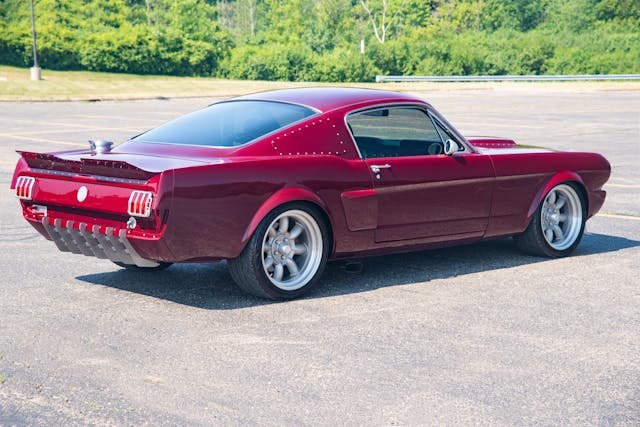
Smith examined the dusty, rusty old car that would be the starting point for this ambitious project, and the perfectionist in him took over. If he had been asked to create a beautiful, elaborately bordered hardwood floor in a fabulous house, the first step would be to rip out the old flooring. Translating that kind of thinking to the Mustang project—his very first attempt at automotive restoration and modification—the obvious starting point was complete disassembly. So, with impact gun in hand, he took the car apart, trashing all the old suspension parts before ripping out the powertrain and interior. In a matter of days, only the shell of the Mustang remained. Everything else went to the curb.
The kind of total remake Smith had in mind would be difficult with the Mustang’s bare bones sitting on his garage floor, so he put his carpentry skills to work and built a dolly on which the car could be easily moved. While he was at it, he built a wooden rollover jig that would enable him to work on the car from any angle.
He used a dustless blasting machine to strip the car of paint and detritus, revealing a multitude of holes and rust. The right door was rotted out and had to be replaced, as did the upper and lower parts of the cowl. Mouse urine had wrecked the floor pans, and there were rust holes in the sheetmetal here and there, so Smith cut out the bad stuff and patched in new metal with a MIG welder.
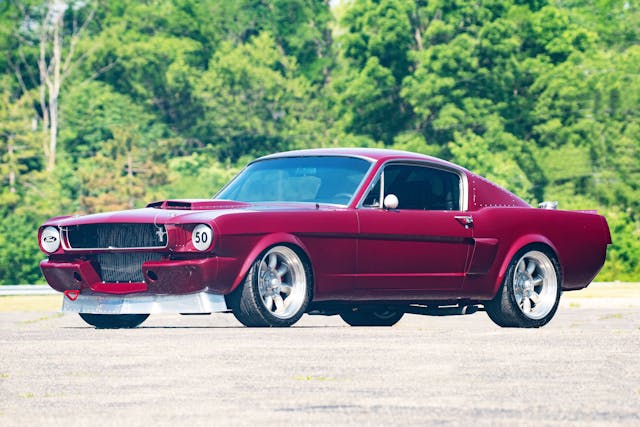
“I had done a bit of welding here and there in the past, but working with metal day after day was new to me,” says Smith. But for someone who had spent a lifetime working with his hands, welding proficiency came quickly. Bit by bit, old, damaged metal gave way to new, and Smith’s Mustang took shape.
The front fenders from the ’65 were junk, so Smith purchased flared fiberglass ones from an aftermarket supplier. “It took me six days to hang one fender,” he says. “Nothing fit right. Had to cut the incorrectly sized fender to fit the doors. I made mounts and glassed them in. Once I had it figured out, I installed the second fender in three hours.”
Some body parts, including aerodynamic mods and a panel that covers the rear side window to make the standard pony more closely resemble a Shelby Mustang, were attached with solid rivets using an air hammer and bucking bar, just as in aircraft construction. Why? “Because I like the look,” says Smith.
Structural integrity is critical in a high-performance car, so Smith stiffened the unibody and welded in a roll cage. Rather than spending a lot on preformed wheel-well tubs, Smith made his own by combining sections of stock tubs. A pair of 2 1/2-inch rear fender flares were added to the body to further stretch the wheel well dimensions, providing ample room for stout 285/35 ZR18 Nitto rubber in the rear and 275/35 ZR18 in front.

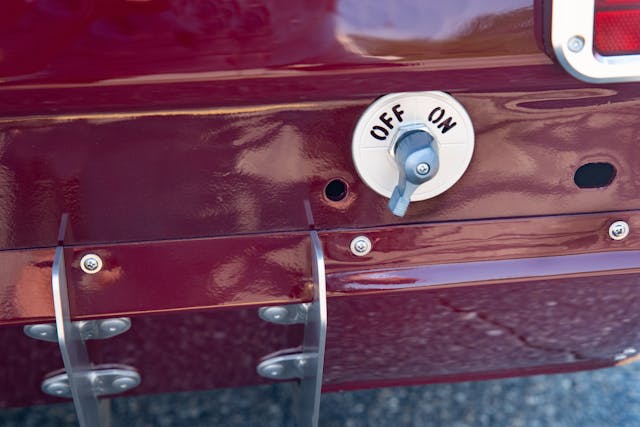
Building a car on an empty shell offers a multitude of options, so Smith took full advantage and installed a Global West dual-wishbone coil-over front suspension in place of the Mustang’s stock components. A Street or Track three-point Watts-link rear suspension with coil springs and Bilstein shocks replaced Ford’s heavy non-adjustable leaf-spring setup in the rear. A 9-inch rear differential and axle housing are supported by the links. The sum total of the suspension upgrades is a sea-change improvement over what was basically a Ford Falcon chassis.
In keeping with his desire to build a car that invoked the best of the Shelby GT350R, Smith decided to plant a small-block Ford engine under the hood, but it had to be a small-block with big power. With an overbored Dart 302 aluminum block and Scat stroker crank, the Mustang’s new engine displaces 363 cubic inches. Mahle pistons on Scat connecting rods provide a compression ratio of approximately 11:1. Atop that stout bottom end are SBF Renegade 220cc Competition cylinder heads, a high-rise aluminum manifold, and an old-school, 750-cfm Holley double-pumper four-barrel. Smith, a devout perfectionist, matched all the ports to the gaskets. On a chassis dyno, Smith’s gem of a small-block knocks out 582 horsepower at the rear wheels. A Tremec five-speed manual transmission delivers that power to 3.50:1 gears in the rear axle.
All those numbers and parts are impressive, but the most amazing thing about Smith’s Mustang is that he didn’t turn to anyone for help. He worked on the build every day for over a year and never had to rely on outside suppliers. He used all the skills he had developed over many years of working with wood and learned some new ones as well. For example, he learned how to paint cars. He had hoped to hire someone to apply the final finish, but after checking prices, he built a paint booth in his garage, wet down the floor, and sprayed the Royal Maroon paint—a 1968–70 Mustang color—applying three coats each of color and clear coat.
The stunning red Mustang that Smith rolled out of his garage in September 2018 is a potent race car and a road warrior in equal measure. He doesn’t plan to compete with his pony car, but he has taken it to track days at M1 Concourse on Woodward Avenue in Pontiac, Michigan. He’s not sure how well his steed performs versus similar cars, but he says that on track days he always seems to catch up to the traffic ahead of him and then must back off to get room to play. Sounds like well-earned fun.
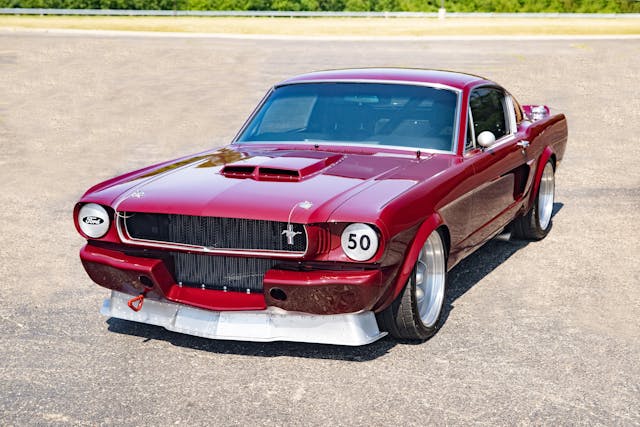
***
Check out the Hagerty Media homepage so you don’t miss a single story, or better yet, bookmark it. To get our best stories delivered right to your inbox, subscribe to our newsletters.
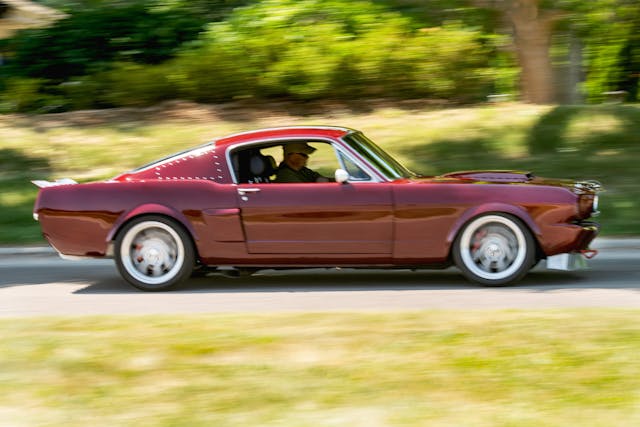
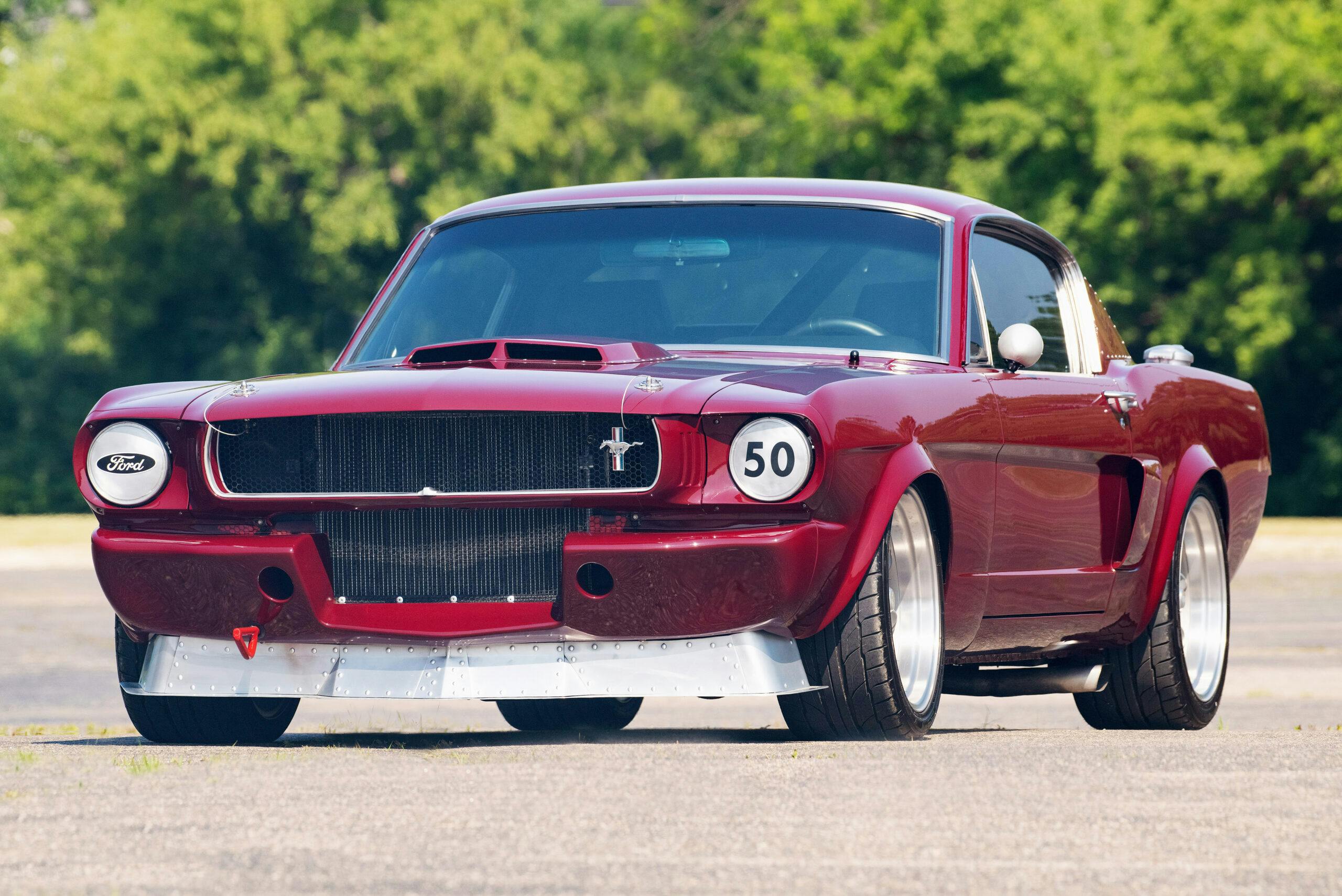
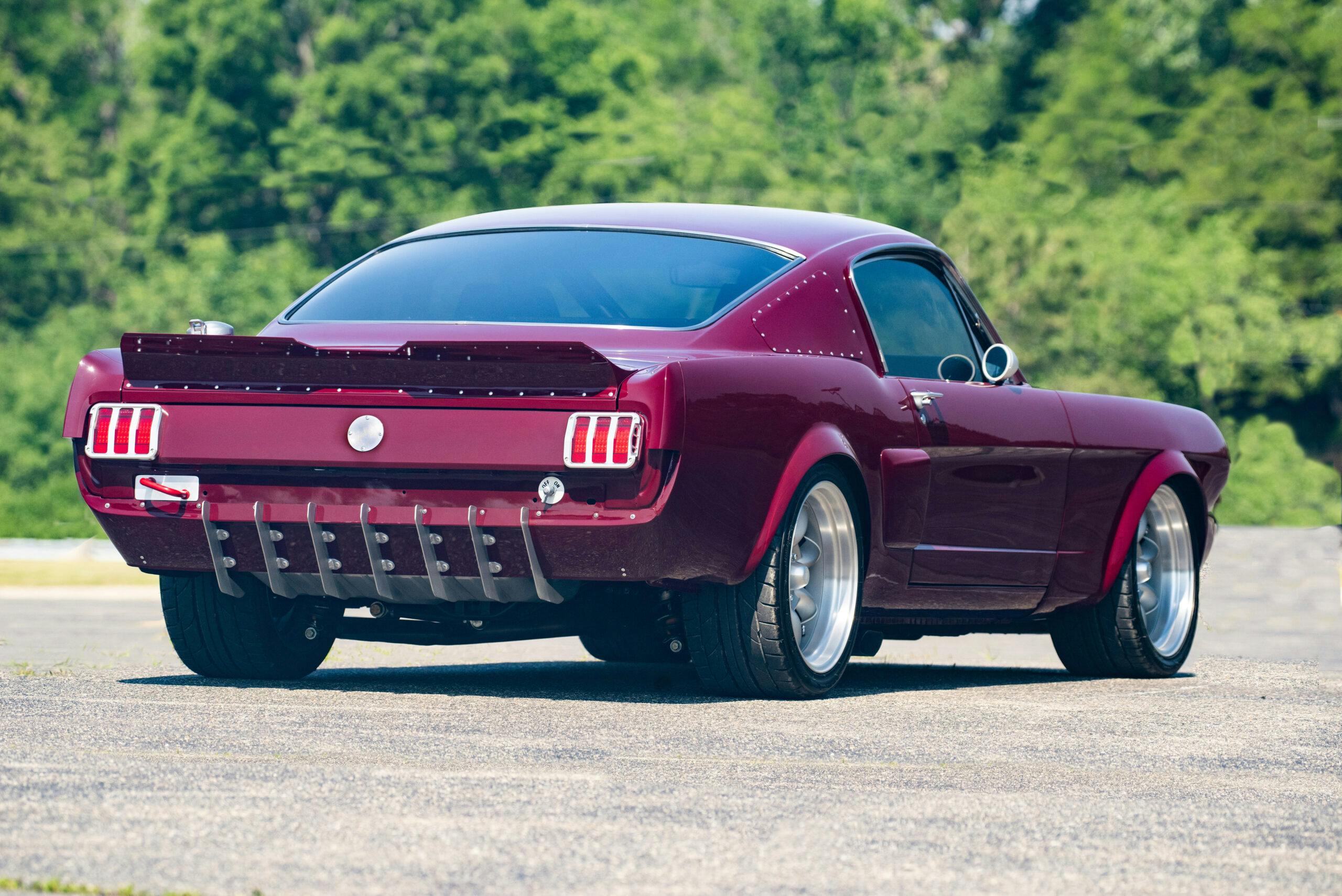
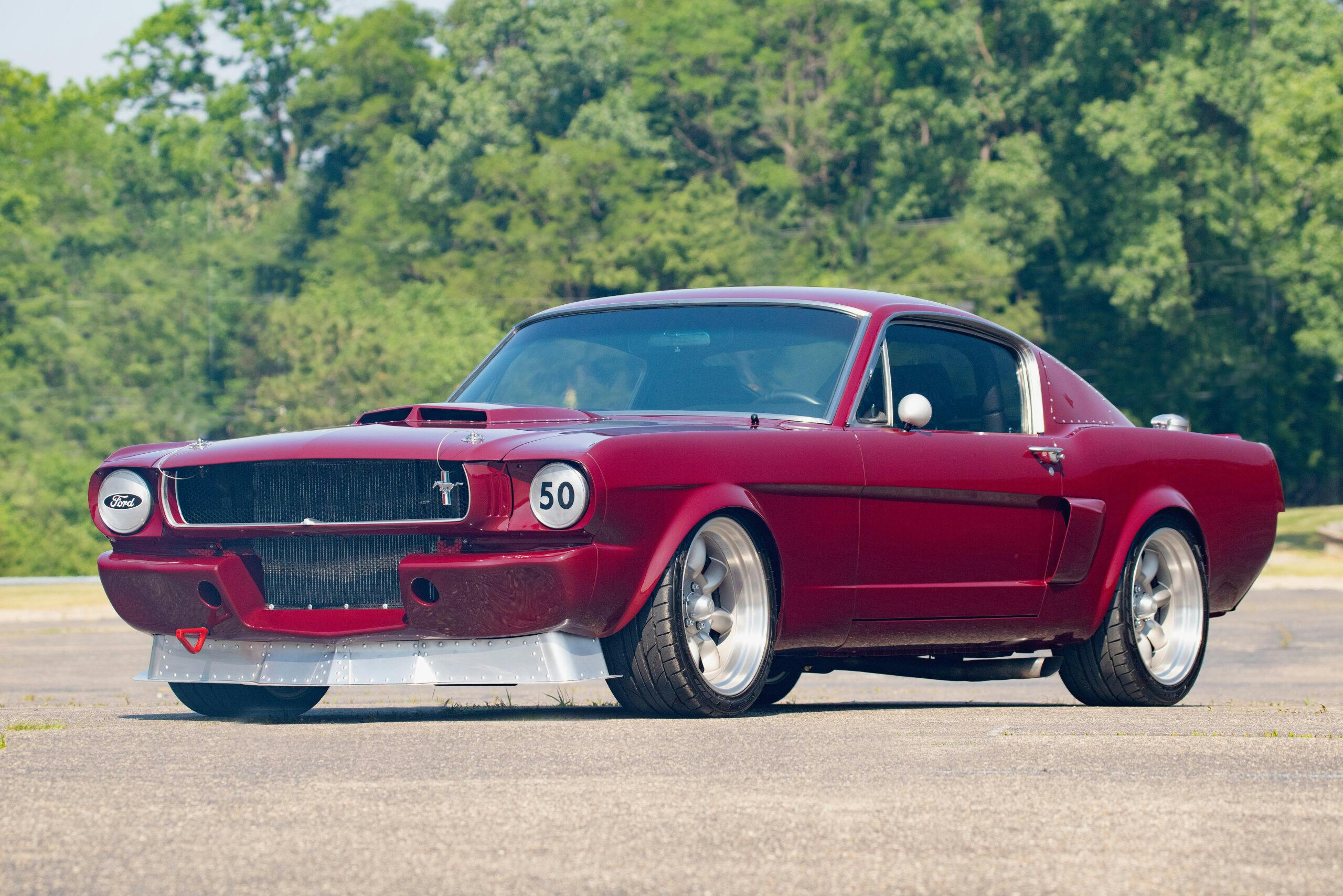
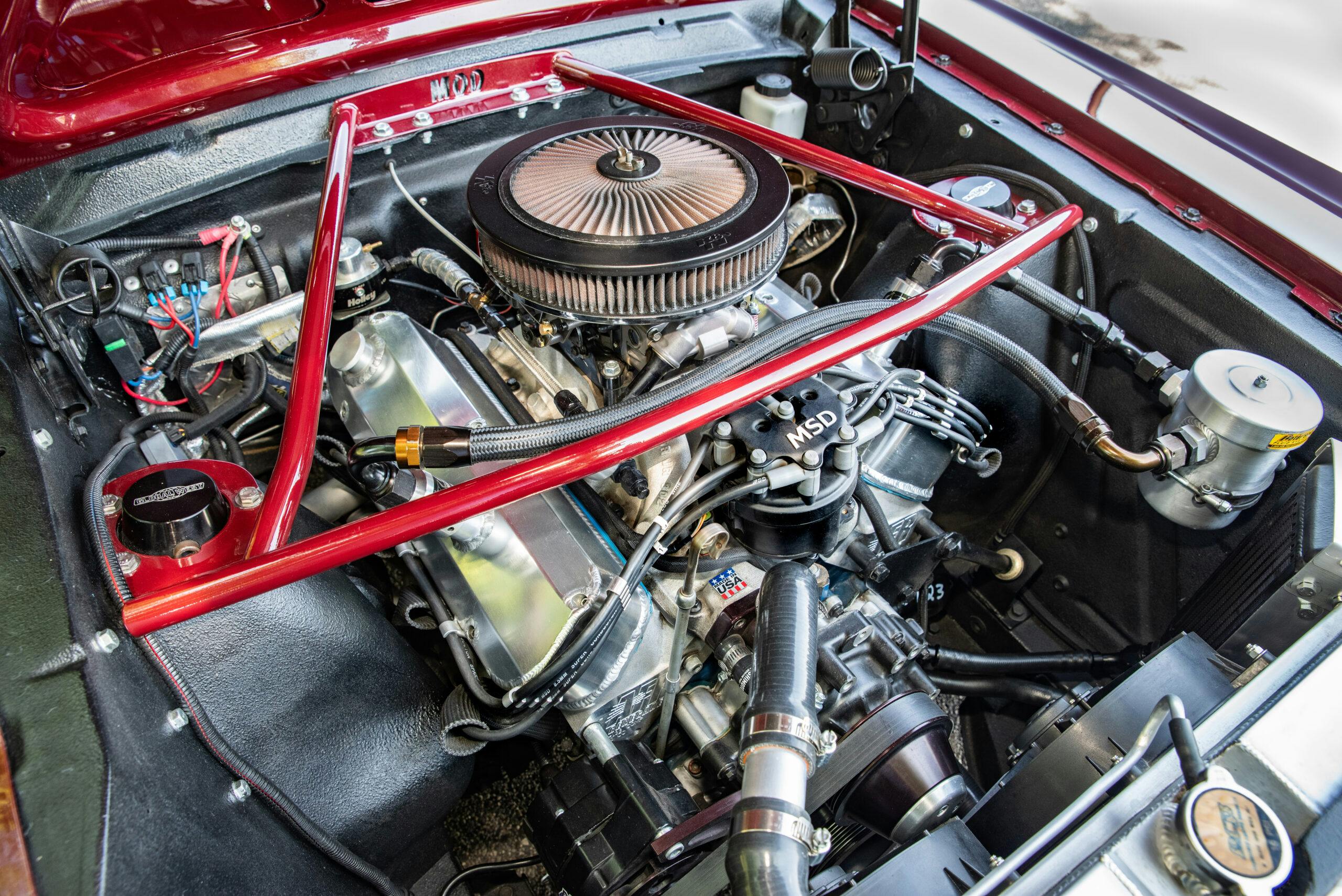
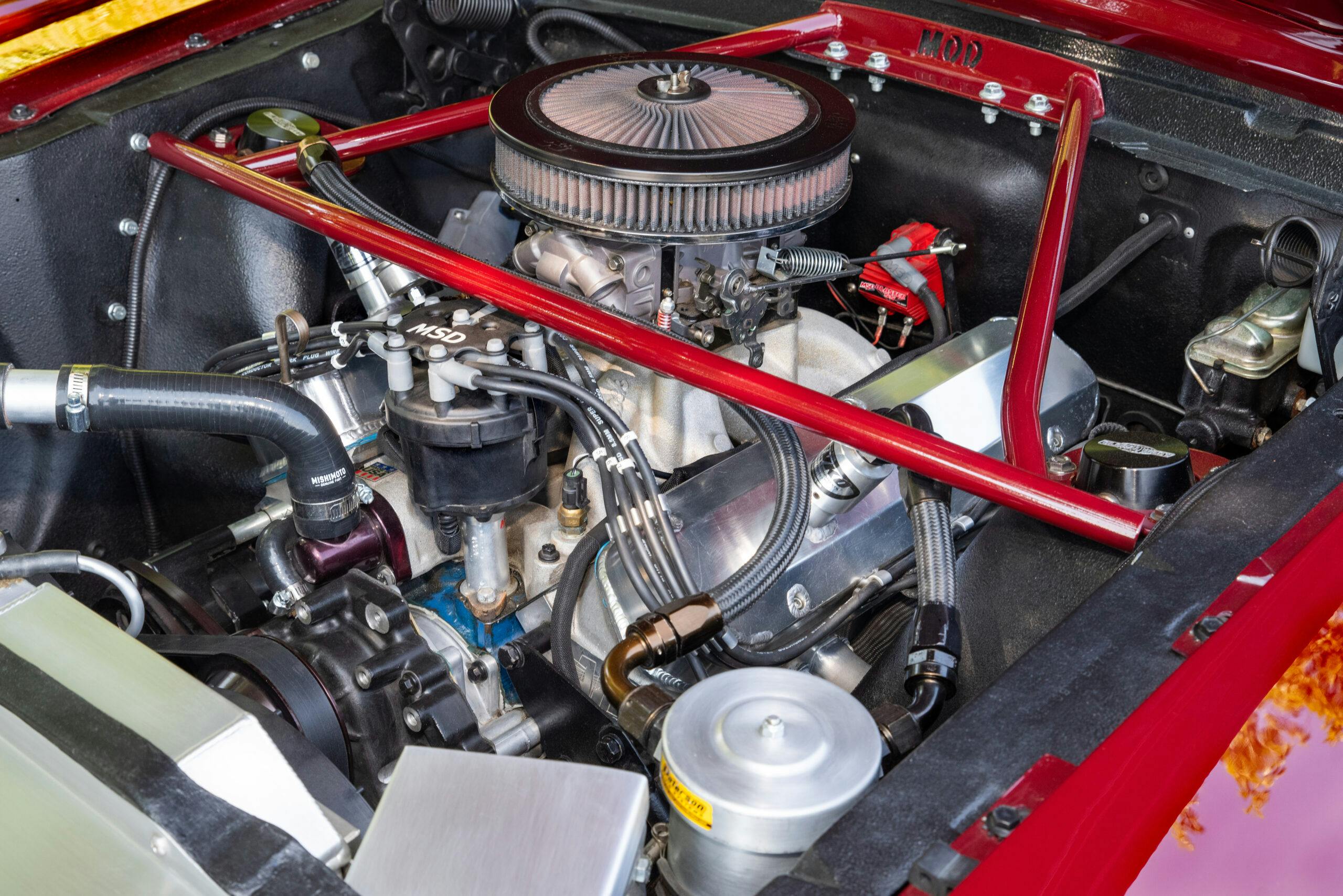
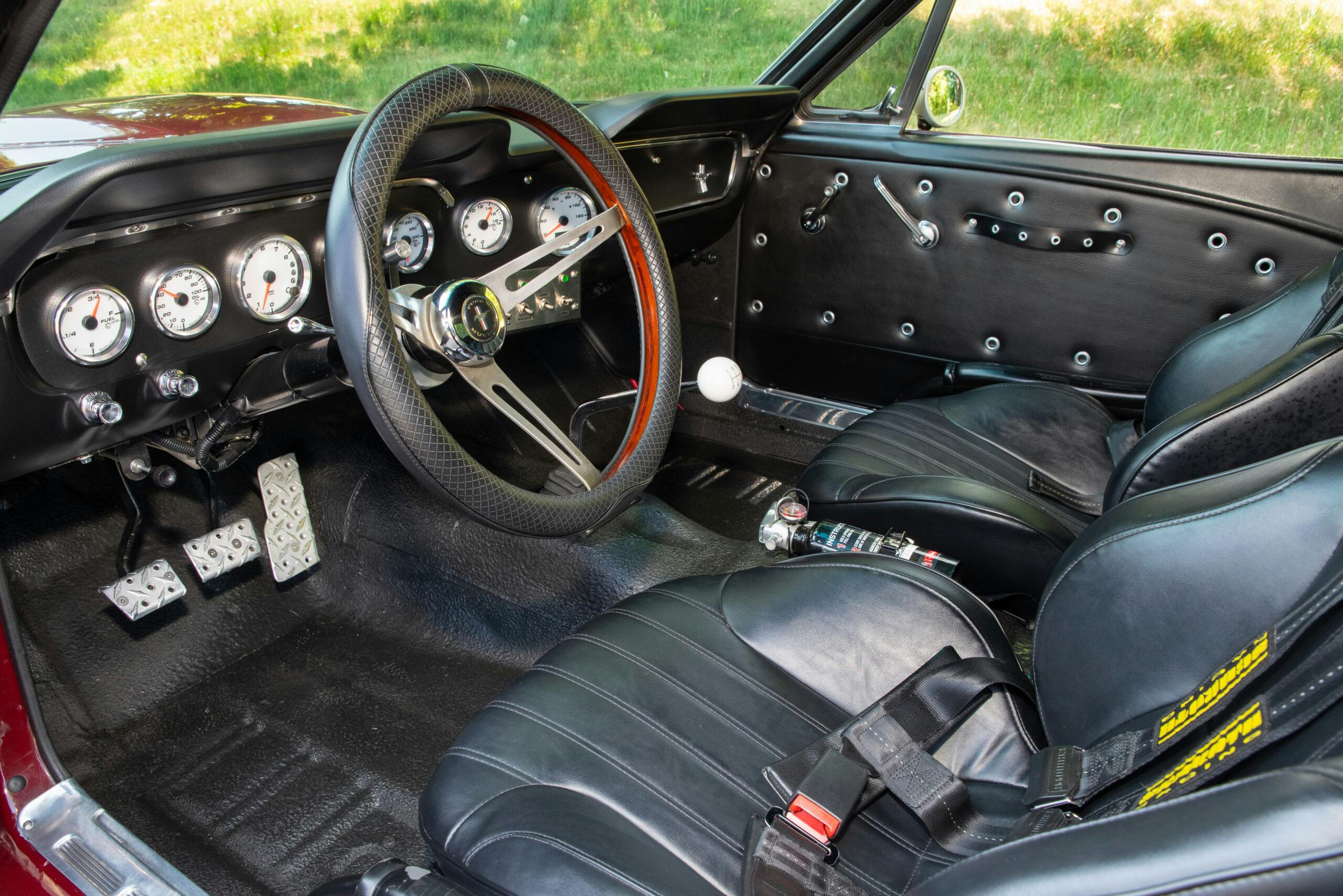
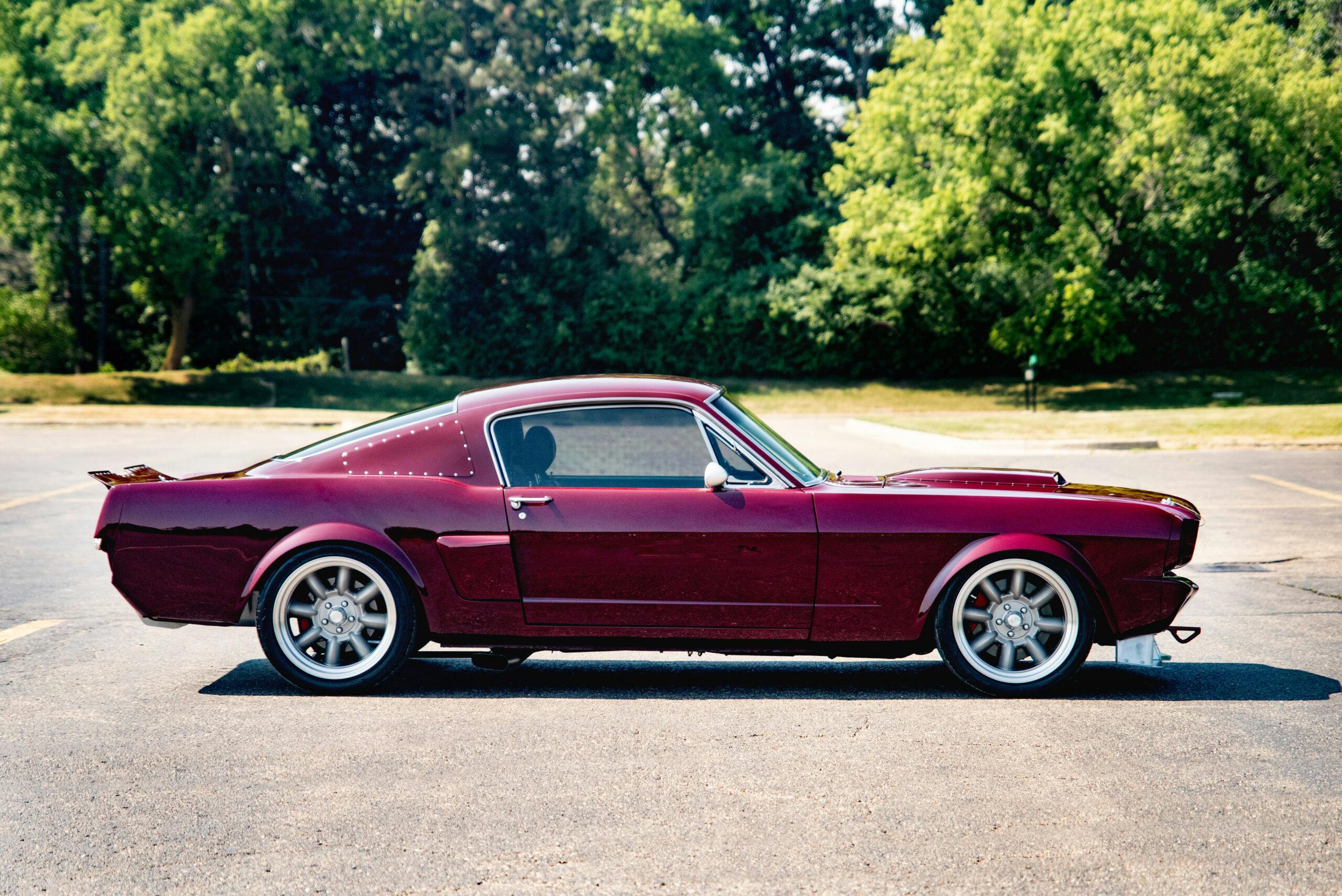


Nice work! It would be nice to see that rear suspension close up too.
I just fell in love again.
Beautiful build Mike. Everything from stance, to color to Panasport style wheels, -all came together in this one. I especially like the sanitary engine bay and Lizard Skin (painted) interior.
We definitely need a video with sound of this small block beast twisting the tach.
The color is great. I am not as much a fan of the back end of the car but I still like it.
What a beautiful job you did Mr. Mike Smith on this creation,you should be very proud of it.
I had a 1964 1/2 in 1970. Did some modifying to it and enjoyed it.
Again great job Mike !
Everything seemed perfection until I saw the steering wheel cover. ouch…
And of what I could see under the steering wheel cover is perfection……..
Sweet car. Looks like a fun ride.
I love it!
I would love to see the wooden dolly and roll-over jig as I’m facing that on my next project.
I was fortunate enough to see this car in person about a month ago at a local Cars & Coffee about a month ago and had the opportunity to hear the history and journey from the owner himself. The pictures, while impressive, just don’t do this car justice. It is impressive and absolutely beautiful!